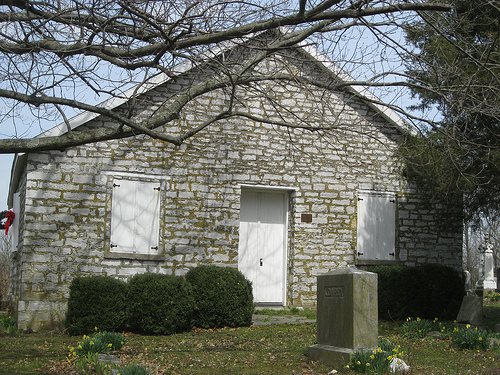 |
| Ebenezer Presbyterian Church – Jessamine Co., Kentucky |
According to the Christian Scriptures, “Samuel took a stone and set it up between Mizpah and Jeshanah. He named it Ebenezer, explaining, ‘The Lord helped us to this very point.'” 1 Samuel 7:12 (CEB). It was a moment where the people of Israel turned from disobedience and found restoration from God.
Here I raise mine Ebenezer;
hither by thy help I’m come;
and I hope, by thy good pleasure,
safely to arrive at home.
Jesus sought me when a stranger,
wandering from the fold of God;
he, to rescue me from danger,
interposed his precious blood.
And Charles Dickens adopted the name for a character in his 1843 novel, A Christmas Story. True to the tale from the Bible, Ebenezer Scrooge turned from his greedy, tight-fisted ways as he begged for the opportunity to re-embrace life.
But a historic church in Jessamine County, Kentucky, also shares the name Ebenezer. Older than Dickens, but more recent than the words of the hymnist is the Ebenezer Associate Reformed Presbyterian Church. True to its name, Ebenezer Church was once abandoned and in great disrepair, but a group of individuals in the mid-1900s brought restoration to this old house of God.
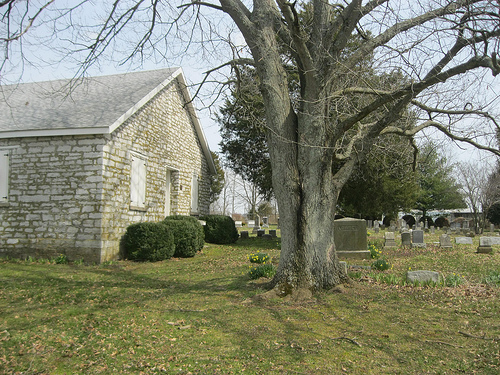 |
| Ebenezer Church & Cemetery |
Ephraim January received from a young American government a land bounty of 1,000 acres. From this, he gifted in 1806 a small plat of land for the church and surrounding cemetery. By the time title to the land passed into the hands of the church, the stone church was already constructed. Orginally, the congregation met in a log meeting house since they were organized in the mid-1790s under the teaching of Lexington-based circuit rider Rev. Adam Rankin.
When Rankin formed Ebenezer, he had already begun a number of other Presbyterian congregations in central Kentucky, including Pisgah and Glenn’s Creek in Woodford County and Mount Zion (now First Presbyterian) in Fayette County. His earlier affiliations, however, were with the proper Presbyterian Church. And you will note above that Ebenezer was of the “Associate Reformed Presbyterian” variety.
The distinction is noted for Rankin had been removed from his posts within the Presbyterian church’s Transylvania Presbytery in 1792. The following year, Rankin began his ministry with the Associated Reformed church and soon thereafter founded Ebenezer. He would serve at Ebenezer until 1803. Rankin was a disagreeable fellow (in 1789, he rode by horseback from Kentucky to Philadelphia to plead against the use of Isaac Watts’ hymns like ‘Joy to the World’ in services) which undoubtedly led to his rift with the denomination.
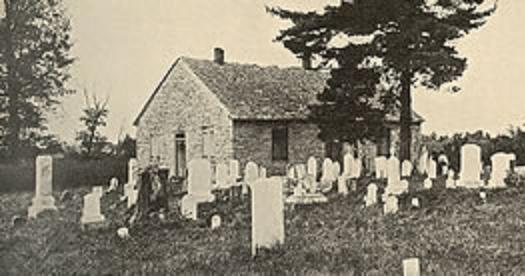 |
| Ebenezer Church, ca. 1898 (15 years after abandonment) Photo: History of Jess. Co., by B.H. Young. |
After Rankin departed in 1803, the same year in which the stone church replaced the old log meeting house. Ebenezer’s new minister, Rev. Robert Bishop, served from 1803 to 1814. Bishop also served on the faculty of Transylvania University in Lexington. A feud, of sorts, erupted between Rankin and Bishop over the years which ultimately resulted in Bishop leaving Ebenezer and Rankin being permanently suspended from the ministry in the Associated Reformed church. In 1824, Rev. Bishop would go on to serve as the first president of Miami University in Ohio.
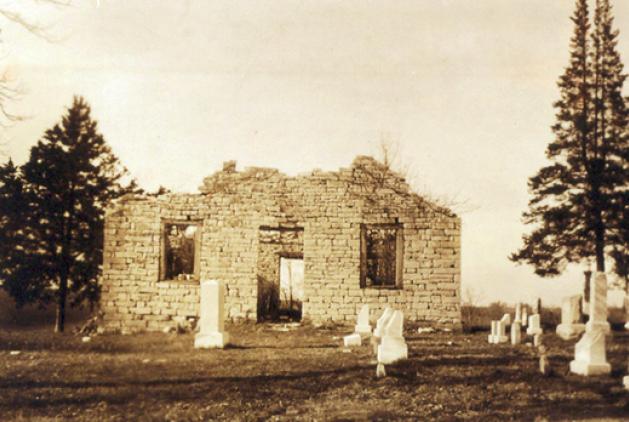 |
| Ebenezer Church, ca. 1910 (27 years after abandonment) Photo: Published Sept. 2008 in H-L |
A long series of itinerant ministers served Ebenezer until 1841 when Rev. Neal Gordon assumed leadership of the church until his death in 1870. Due to its remote location, the stone church then began to decline and was abandoned by 1883. After it was abandoned, the years took their effect on the old off-the-beaten-path church. The photos on the right show how years of abandonment took a great toll on this old church.
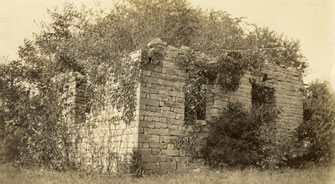 |
| Ebenezer Church, ca. 1940 (57 years after abandonment) Photo: Ebenezer Cemetery Assoc. |
In 1922, the Ebenezer Cemetery Association was formed to care for, preserve, and maintain the church and grounds. At that time, the stone building had almost entirely collapsed. Wrote James Harvey Guyn, association president, in 1953: “[t]he walls had completely fallen, except for one corner. These were rebuilt, using the old stone, and a concrete floor was laid. A new roof, new pane glass windows, and wooden slat shutters were added, following the design of the old building as closely as possible.” Total cost to rebuild was $3,664.
According to the National Register of Historic Places application (listed in 1983), the Ebenezer Church is the “only surviving stone church in co[unty]; oldest religious structure in co[unty] dating from settlement period.” Today, the property is owned by the Ebenezer Cemetery Association. Once a year, the organization meets for its annual meeting in the historic church.
Additional photos of the Ebenezer Church and Cemetery can be found on flickr.
Sources: Bishop Biography; Ebenezer Cemetery Assoc.; NRHP (Ebenezer); NRHP (First Presbyterian);
